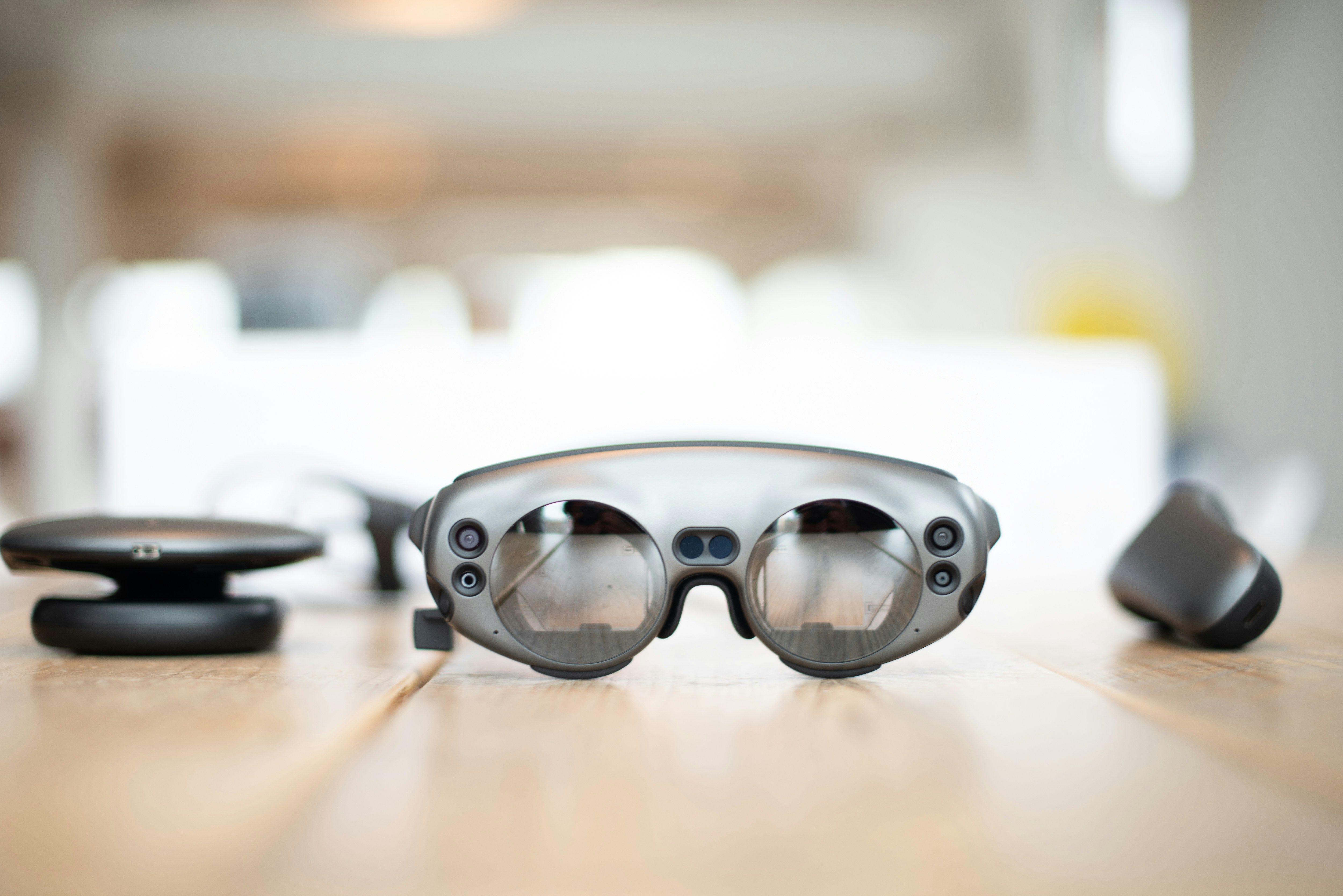Making the Unbelievable a Reality: How Immersive Learning is Reigniting Education
)
Imagine walking through a rainforest from your living room or exploring the depths of space from your classroom chair—would you take the opportunity?
Immersive learning tools are turning these experiences into reality for today’s students, creating interactive and engaging environments—all without leaving the classroom. Using tools like virtual reality (VR) to augmented reality (AR) and mixed reality, immersive learning provides students with opportunities to learn that simulate real-world scenarios and present information in dynamic, visually rich formats.
But what does immersive learning look like? And how can educators make these seemingly impossible experiences a reality within their classrooms?
Enter immersive learning.
Immersive learning leverages cutting-edge technologies to create deeply interactive and engaging educational experiences. It involves using tools like Virtual Reality (VR), Augmented Reality (AR), and Mixed Reality (MR) to provide students with experiences that simulate real-world scenarios or present information in dynamic, visually rich formats.
Immersive learning includes the creation of interactive environments and engaging experiences, the use of enhanced visualization, and emphasizing concepts through experiential and personalized learning.

Each of the following features of immersive learning have specific roles to play when building a robust classroom environment. Let’s take a closer look:
- Interactive Learning Environments
Immersive learning helps educators create a classroom environment where students can actively interact with educational content. Instead of passively watching a video about the universe, VR technology can transport students directly into the cosmos, allowing them to explore distant planets and the vastness of space from their classroom seats. Virtual reality can also take students to historical sites or complex scientific environments, and even enable them to explore and manipulate virtual objects through interactive VR software.
- Creating More Engaging Learning Environments
Classroom learning becomes more engaging with immersive learning tools, by transforming traditional lessons into interactive experiences. Students can participate in simulations, virtual field trips, hands-on activities and even participate in virtual challenges or games that capture their interest and pique their enthusiasm.
- Enhanced Visualization
Equip your students with tools that bring complex concepts to life through 3-D visualizations, interactive experiments, and dynamic illustrations. For instance, augmented reality technologies or apps like Adobe Aero and JigSpace can overlay information onto real-world objects, allowing students to examine and interact with images and items, while VR apps like Apollo 11 VR and Google Earth VR can create entirely virtual environments for students to explore.
- Experiential and Personalized Learning
By learning through experience rather than passive reception of information, students engage directly with content, which can enhance their comprehension and retention of subject matter. Immersive learning technologies can also be tailored to individual learning styles and needs, offering personalized educational experiences that accommodate learning at different paces and preferences.
Today’s Immersive Learning Technologies, Defined
- Virtual Reality (VR): Creates a fully immersive, computer-generated environment where students can interact with digital objects and scenarios.
- Augmented Reality (AR): Overlays digital information onto the real world, allowing students to interact with virtual elements while still being aware of their physical surroundings.
- Mixed Reality (MR): Combines elements of VR and AR to create interactive experiences that blend real and virtual worlds.
So, how did immersive learning become important to the educational experience here in America? And how far has it come since its inception?
Early Foundations of Immersive Learning
The concept of immersive learning began to take shape in the 1980s with the advent of early computer-based simulations and educational software. Though rudimentary by today’s standards, these early tools laid the foundation for the immersive technologies we use today. By the 1990s virtual reality and augmented reality technologies started to emerge. During this period, VR was mainly used in research and higher education, with limited application in K-12 settings.
Initial Adoption and Development
The introduction of more affordable and accessible VR and AR technologies began in the early to mid-2000s. Early adopters in K-12 education experimented with these tools, often in specialized programs or pilot projects.
One of the first adopters of immersive learning technology was David M. Gagnon. A pioneer in educational VR, Gagnon’s work at the University of Wisconsin-Madison explored the use of VR for immersive learning experiences.

Another leading researcher in immersive learning and technology integration in education was Dr. Chris Dede of Harvard University. Dede's findings contributed significantly to the understanding and development of immersive educational environments.
Expansion and Mainstream Adoption in the 2020s and Beyond
The new decade brought a dramatic shift in the accessibility and availability of immersive learning technologies. Immersive learning technologies became more mainstream in K-12 education, accelerated by the COVID-19 pandemic which pushed schools to explore new ways of engaging students remotely.
As of 2024, more than 30% of schools in the U.S. have integrated some form of immersive learning technology into their curriculum. This includes VR, AR, and MR tools being used to enhance subjects like science, history, and the arts. Many districts even have dedicated VR labs, AR toolkits, and immersive learning initiatives that support both in-person and remote learning environments.
At Mountain Ridge Middle School in Arizona, augmented reality tech is used to enhance science lessons, enabling students to manipulate complex concepts and materials related to the solar system, human anatomy and machinery, to name a few.
And at the Henry Ford Academy in Dearborn, Michigan, students use VR to immerse themselves in historical events like the American Revolution or explore ancient civilizations like those of Pompeii or the Aztec Ruins.

These and other school districts around the country are leading the way and pushing the envelope of what immersive learning means, as well as what it can be used for, ultimately inspiring other school systems to do the same.
Why Does Immersive Learning Matter?
Immersive learning is revolutionizing K-12 education by boosting student engagement and motivation, improving retention of subject matter, providing equitable access to resources, and preparing students for the careers of tomorrow. Overall, it offers numerous options for enhancing early learning, making classrooms more enjoyable, effective, and aligned with the needs of the 21st century.
While widespread implementation may take time, continued advances in accessibility and affordability could make immersive learning technologies a standard feature in every K-12 classroom.
Ready to Level Up Your Knowledge?
Register for FETC 2025 to dive deeper into immersive learning and other cutting-edge topics that are shaping the future of education. Don’t miss out—secure your spot today!
